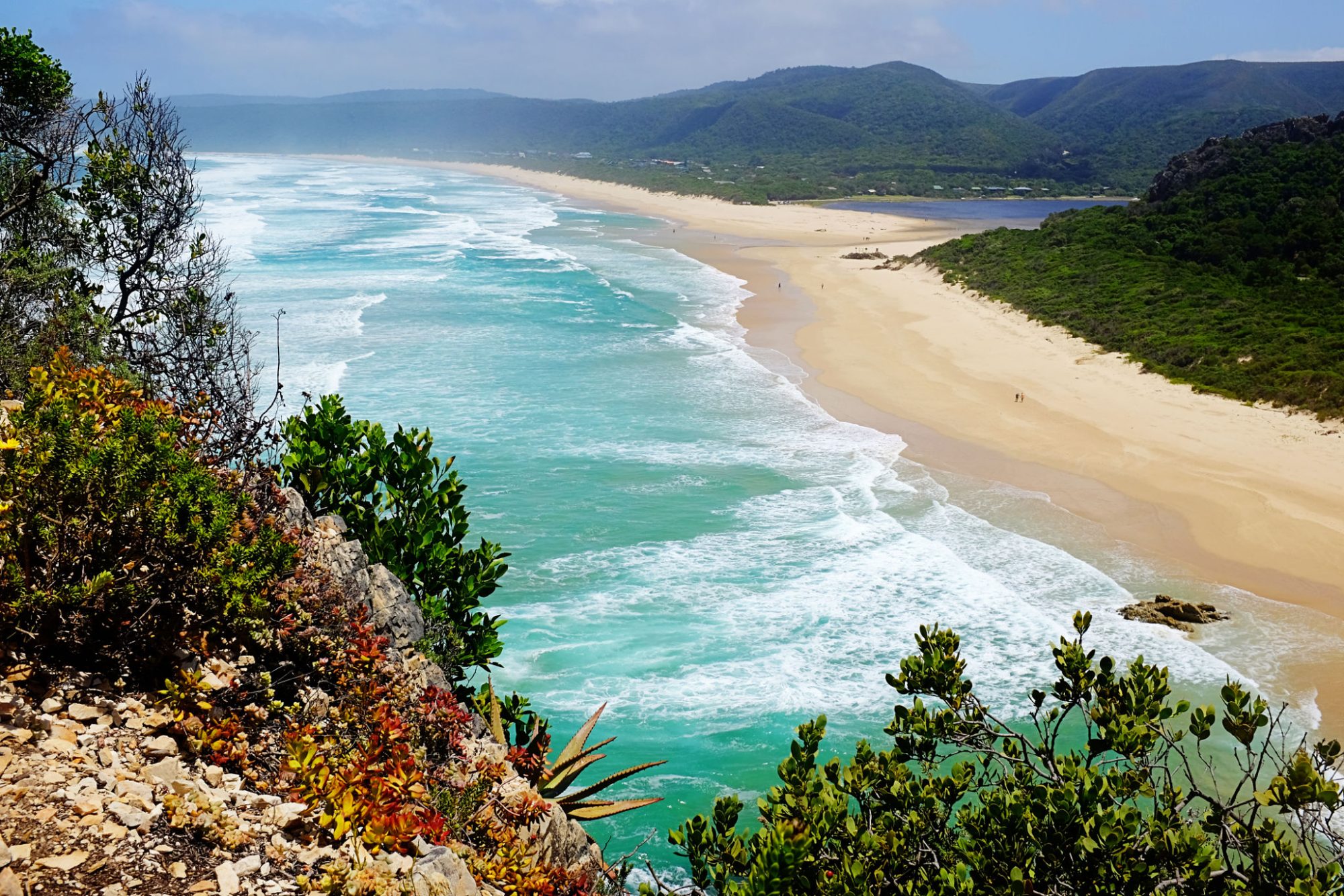A Beginner’s Guide to Trail Running
It’s fair to say that trail running has seen a big jump in popularity over the last few years. More people are talking about it than ever before, and more people are sharing their trail runs on social media than ever before. In fact, it was the hundreds of great photos of trail running on Instagram that converted me from someone who hadn’t run for years into someone that now runs at least three times a week.
The appeal of getting out into green spaces and exploring on foot is obvious so for the last few months I’ve been building up my fitness with regular runs and learning the basics of trail running. I’m definitely still a novice with a lot to learn, but I have picked up a few things over the last few months that I’ll share in this beginner’s guide to trail running…
What is Trail Running?
Trail running is essentially running ‘off-road’, away from the pavements and streets. Think forests, hills, and mountains, and you’d be on the right track, but don’t worry, you don’t have to run up a mountain just yet.
The line between trail running and fell running has become somewhat blurred in recent times, with many people under the false assumption that trail running is all about running to the tops of mountains. That’s not the case, trail running is simply running on terrain that is not paved and goes a little bit more into the wild than your local streets and town.
Typically, a trial run will feature more ascents and descents than your average road run, but it’s not all about running up hills.
What are the Benefits of Trail Running?
There are absolutely loads of benefits when it comes to trail running, and you’ll soon see why trail running is so much better for you than running on roads.
Your Core Fitness Will Improve
The nature of trail running should mean that you have a wide variety of terrain and obstacles to tackle, from steep ascents and descents to uneven rocky or root-covered trails. The constantly changing trails will force you to use muscles that you otherwise wouldn’t as you adjust your balance and center of gravity to keep momentum. New trail runners that have switched from running on roads often find that they will build up fitness much quicker this way as they are working harder to stay balanced.
There is Less Chance of Injury
As anyone who has spent any length of time running on tarmac will know, running on hard surfaces can make your joints hurt, particularly your knees and ankles. Trail running reduces the stress of impact on your joints as the terrain is mostly made up of softer surfaces such as grass or mud. Although trail running has its own risks, it’s widely regarded that trail running causes fewer injuries than repetitive running on roads.
Your Runs Become an Escape
Heading away from the hustle and bustle of your town or city can soon become an escape that you look forward to. I’m sure we’ve all had moments when motivating ourselves to go to the gym or to go for a run around your local streets has been difficult, but heading out for a trail run is different, it’s a micro-adventure to look forward to, and an opportunity to go and explore new places.
You Can Enjoy the Great Outdoors
When I run around my local streets I tend to have earphones in and have my head down just getting the run done. On a trail run, I always run without earphones and have my head up enjoying the scenery and the peace and quiet. Of all of the many benefits of trail running, this is the one that appeals to me the most. Setting my alarm for 6 am to go for a run in a beautiful place is never a chore.

Where to Go Trail Running
Now that you’ve been convinced of why you should go trail running, the next question is likely to be ‘where can I go trail running?’
There are an unbelievable amount of footpaths through our countryside and it’s easier than you think to start planning routes and getting out exploring. Picking up an Ordnance Survey map, or downloading the OS Maps app is a great starting point, with these maps you can start looking for trails near to where you live and you can start looking at ways to link trails together to make a circuit of a length suitable for your fitness levels or the amount of time you have.
If you’re not quite comfortable using maps or exploring the unknowns just yet, then there are a number of options for finding waymarked routes out there. Forestry England has several trail running routes through their forests around the country. These usually vary between 2.5k up to 10k which is a good range for beginners looking for an introduction.
The National Trust has also curated a list of great trail runs at some of the locations that they manage, and they even organize night runs at some of their properties. The National Trust looks after some of the most beautiful places in the country, so expect incredible things from these runs.
There are opportunities for great trail runs all over the country, but the important thing is getting out there and running. Don’t overthink the location, just go and explore.
What to Wear for Trail Running
As with any sport, there’s a whole world of expensive gear out there ready to tempt you into parting with your hard-earned cash. Trail running is no different and there are plenty of expensive options out there if you want to invest in a good kit. However, if you’ve already got a pair of trainers, a T-shirt, and a pair of shorts then you can go trail running right now. You don’t need to spend big to get started. After all, trail running might not be for you, so don’t spend anything you don’t need to until you know it’s something you’re going to stick with.
However, when you have got the trail running bug and you’ve decided it’s something that you’re going to do regularly, you might want to think about upgrading some of your gear to something more suited to trail running, and shoes are where you should start.
Trail Running Shoes
Trail running shoes are designed for the off-road trails that you will now be running on. They’re sturdier, offer more support, have soles designed for better traction, and will be able to cope with muddy surfaces much better than your average running trainers. Imagine the difference between the tires on a road bike and a mountain bike and you’ll start to understand why trail running shoes can make a big difference.
Salomon is widely regarded as the market leader and expert when it comes to making trail running shoes, and as I’ve been wearing their hiking boots for years without any complaints, I opted to go for their trail running shoes without much thought for any of their competitors. They have a wide range of shoes available for trail running, but also have some shoes that are suited to both trail and roads.
If like me, you expect that you’ll run on trails regularly but will still head out on your local streets for occasional runs, you may want to look at a shoe that is going to be great for both options. I chose the ‘Sense Ride 2’ shoe for trail running, and haven’t worn my old trainers since. They’re lightweight and comfortable, but also robust and grippy. Definitely worth the investment.
Jackets and T-Shirts
Any T-shirt that’s designed for sweating in will be fine for trail running. You don’t really need anything that has been designed for trail running. All you need is a lightweight, breathable fabric that will wick moisture away from the body and dry quickly.
If you’re planning longer runs out in the wilderness then it’s a good idea to get a waterproof jacket, after all, we get plenty of rain here in the UK.
Trail Running Hydration Packs
When you’re running for prolonged periods, it’s important to stay hydrated and take on plenty of water. If you want to keep your hands free and not carry a bottle then a trail running pack is your best option. This will allow you to store plenty of water close to your body without restricting you and also keeps your hands free for ease of movement.
As a beginner, it’s unlikely that you’ll need one of these, but as you progress and your runs get longer and longer it is something that you may want to consider. In reality, you’ve got to be a pretty serious runner to pull one of these off, you don’t really see amateurs plodding around in these.
Now that you know where to go and what to wear there’s nothing left to do but get out there and hit the trails. Forget about Strava times and tackling big hills, for now, just give it a go and I’m sure you’ll be converted just like I was.
Is a husband, father, weekend adventurer and freelance writer. Based in Warwickshire.








